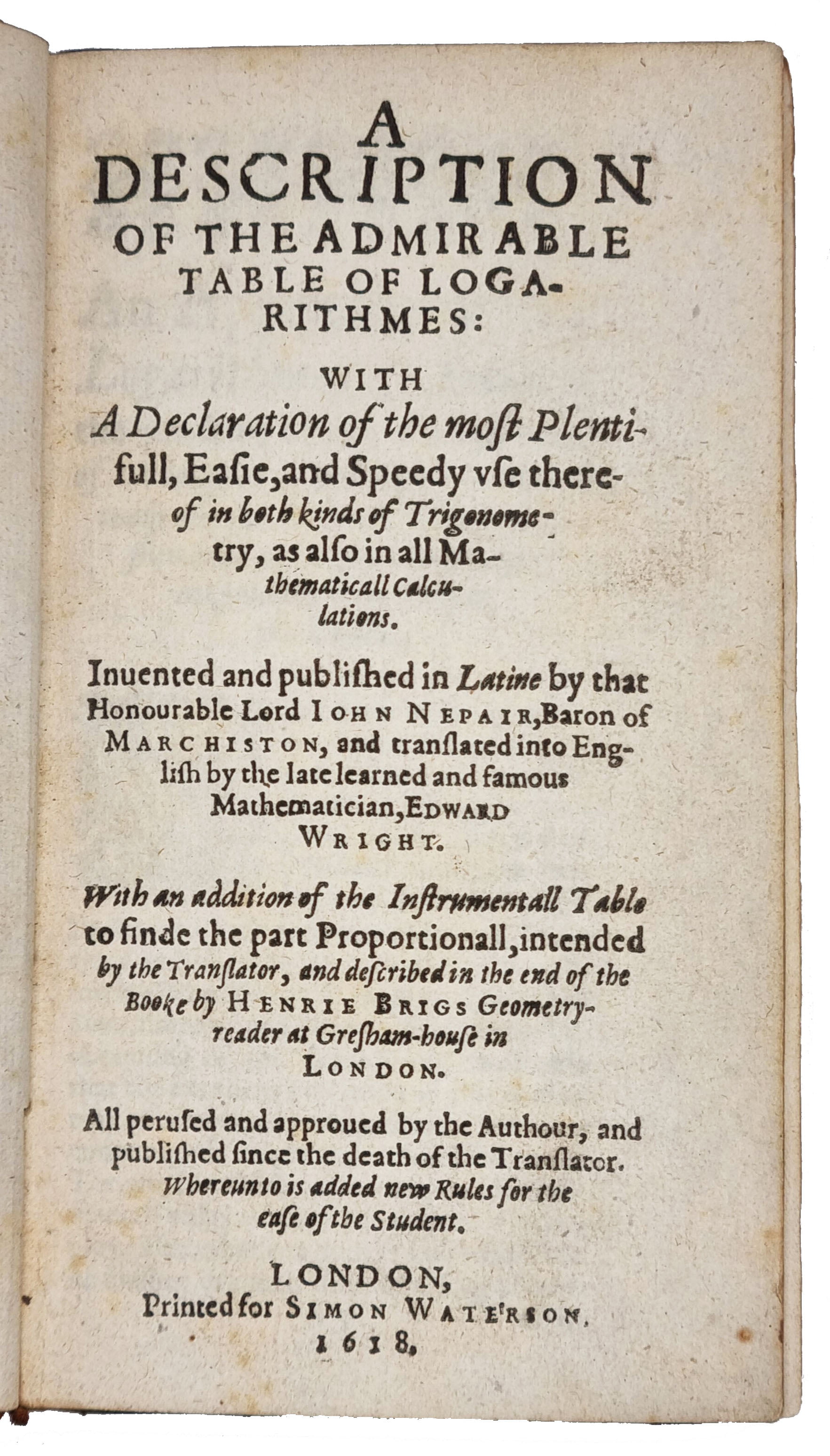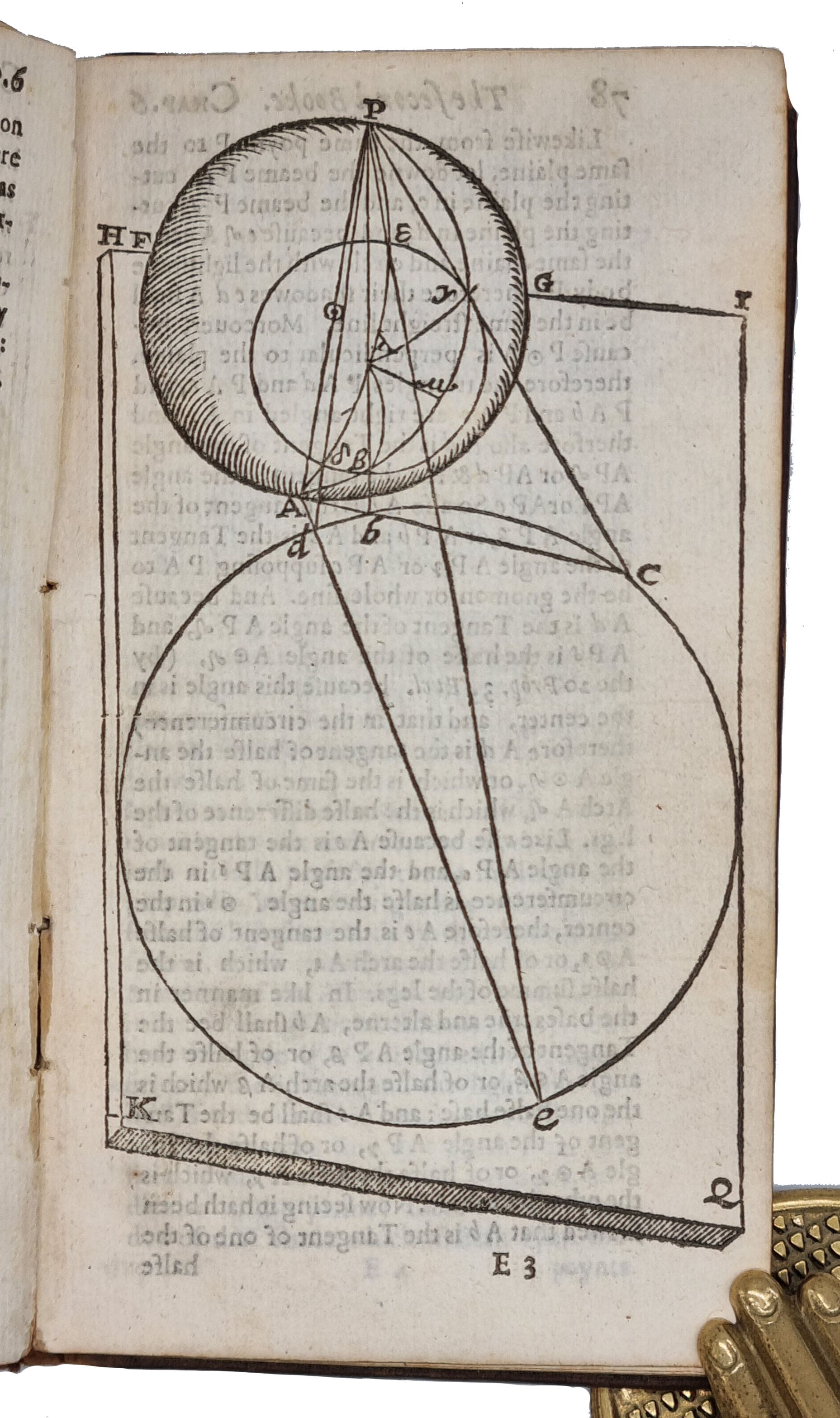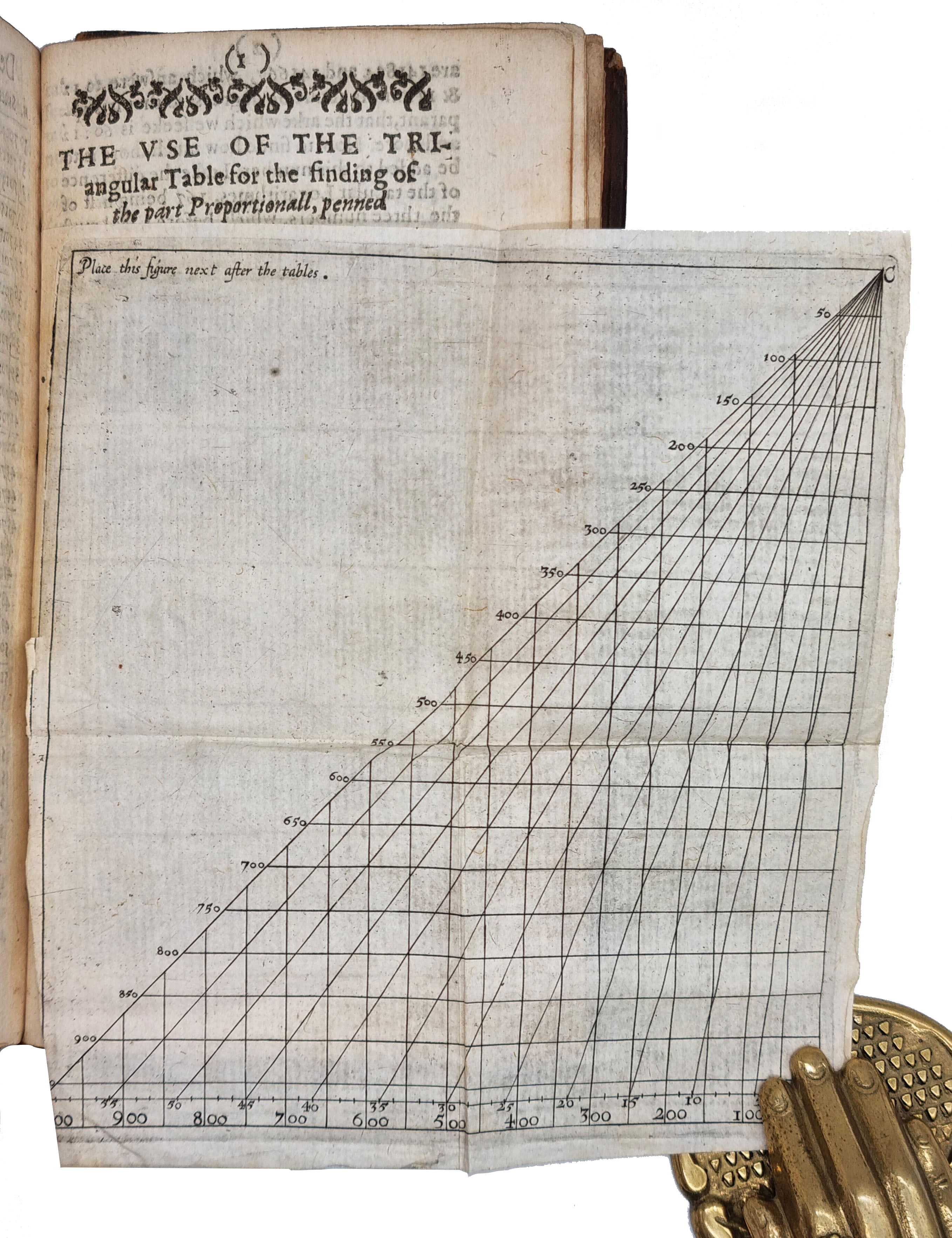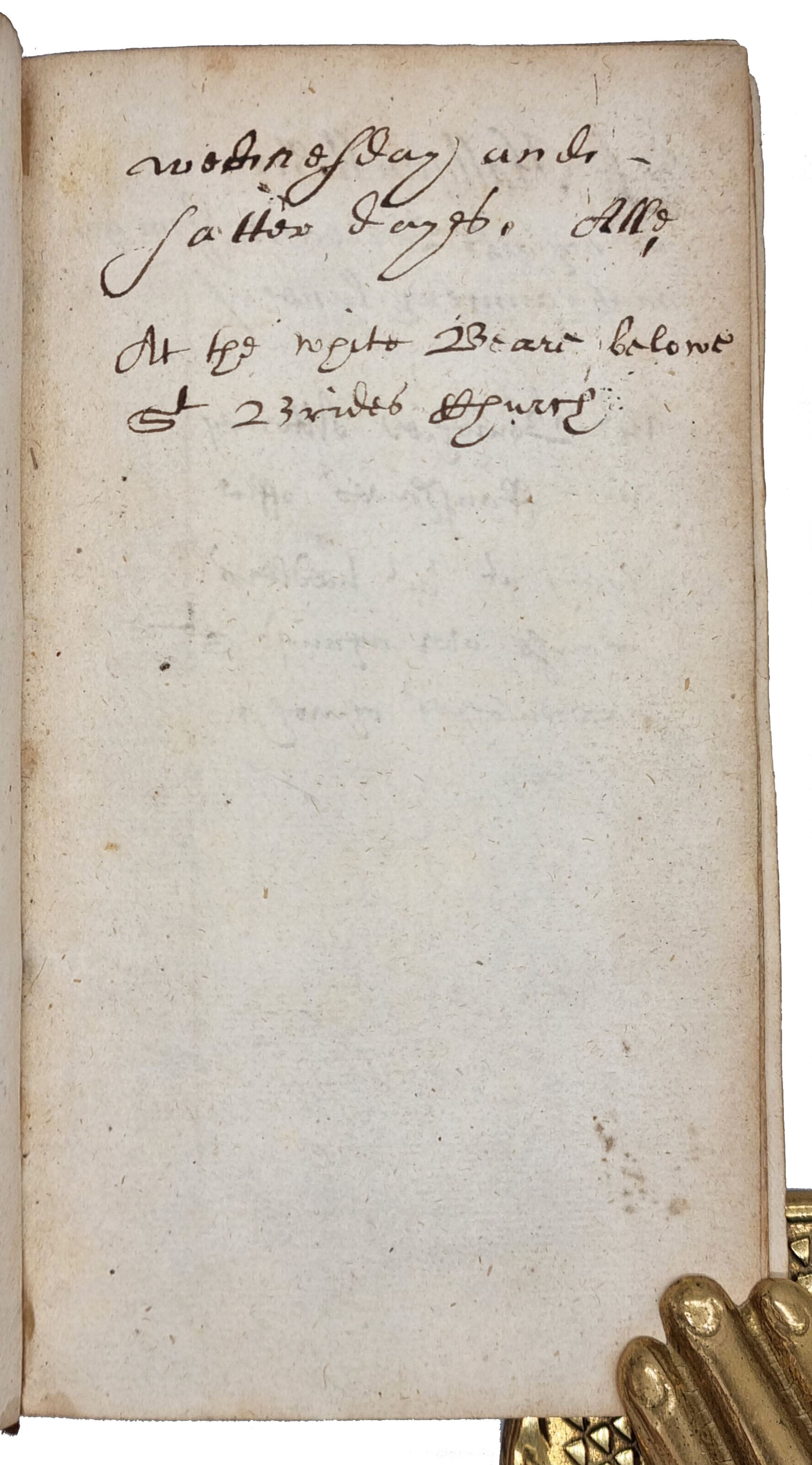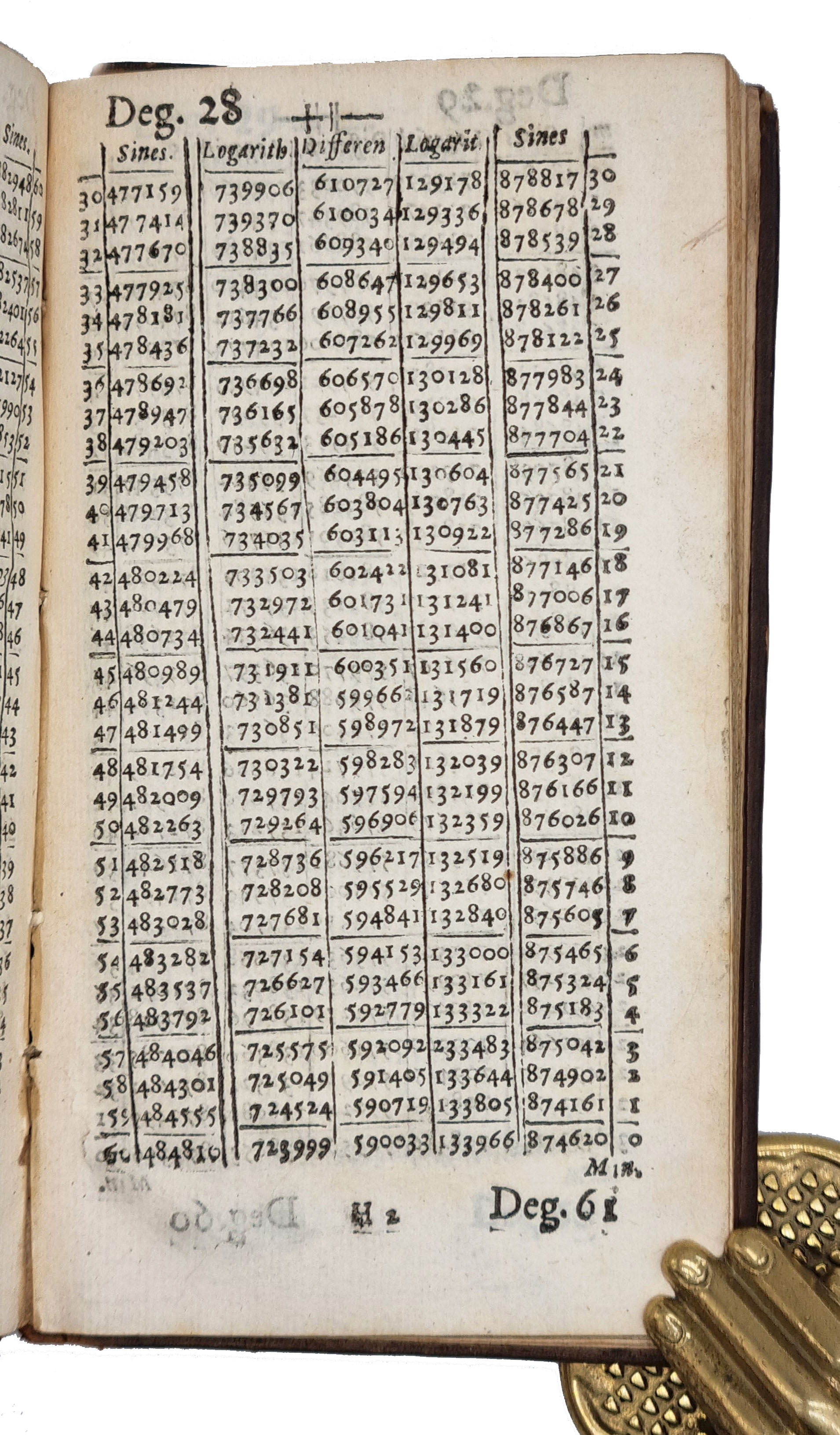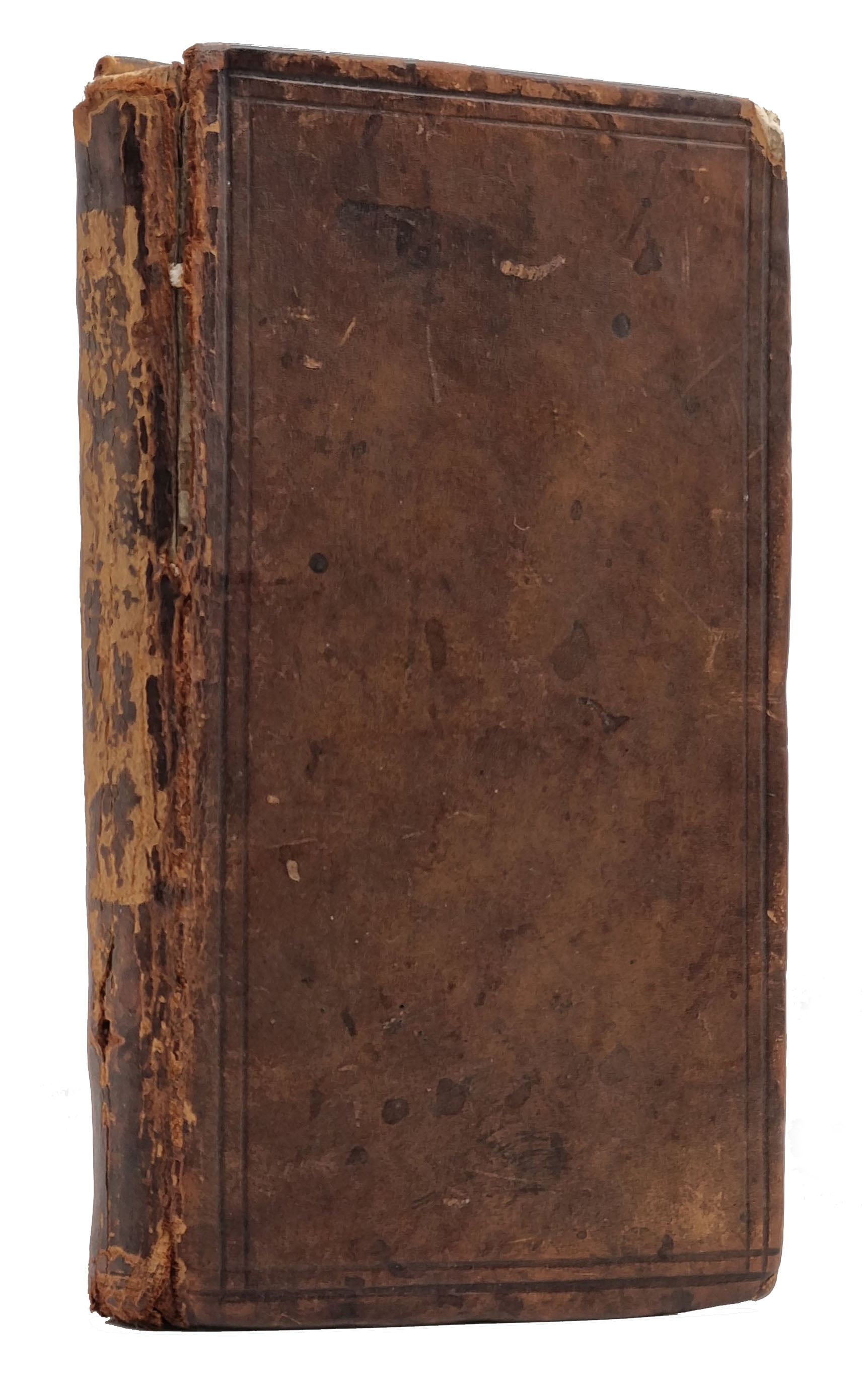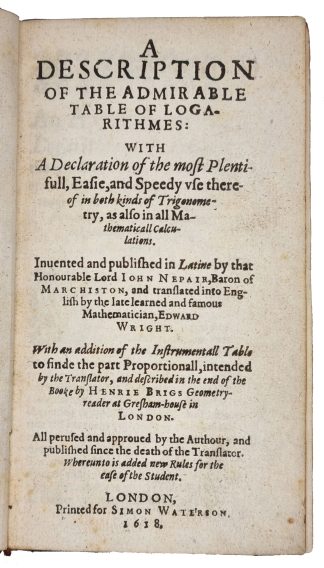NAPIER, John
A description of the admirable table of logarithmes: with a declaration of the most plentifull, easie and speedy use thereof
London, Simon Waterson, 1618£22,500.00
12mo. pp. [iv], 16, [xxii], 89, [lxxxii], 6, [iv], 8. A11 (A1, A11 blank) A10 (A1 blank) B-H12 I8 K2. (E10 and E11 misbound in K) 1 folding engraved plate. Floriated and historiated woodcut initials, typographical headpieces, numerous woodcut text diagrams, one full page, “S. P Rigaud Jan. 23 1819” at head of fly bibliographical note in C19th hand below, contemporary note “Wednesday and Saturdays, alle at the White Bear below St. Brides church” on fly recto, early autographs of “Jo. Hallywell”, “Mr Bourchier Attorney” and “Lyete at Mr Treedlers house” on verso, stamp of the Radcliffe Observatory Oxford on pastedown, book-label of Erwin Tomash below. Light age yellowing. A very good copy, crisp and clean, in contemporary English calf, covers bordered with a double blind rule, spine rubbed.
Exceptionally rare and important work, the second edition of Edward Wrights translation into English of Napier’s seminal work on logarithms the Mirifici logarithmorum canonis descriptio. In this edition the original 1616 title has been removed and replaced with a new gathering which includes all the new material for this edition – a new title and an appendix of 8 leaves, all of which are placed at the beginning. Edward Wright was famous for his skill at navigation. He wrote Certaine errors in navigation in 1599 and was for a time a mathematical lecturer in London (a successor to Thomas Hood’s lecturers just prior to the establishment of Gresham College). Wright was a friend of Henry Briggs, and it was through this connection that he first learned of Napier’s logarithms. After Wright translated Napier’s Descriptio, he sent the translation to Napier for approval. Napier endorsed Wright’s work, but before it could be published, Wright died. Wright’s son, Samuel, then assumed responsibility. It was he who wrote the dedication to the East India Company (which had supported Edward’s mathematical work), but he, too, died before the work was through the press. It fell to Henry Briggs to complete the task. Briggs added a Preface to the Reader and a final short section describing an aid for finding the proportional parts needed to determine logarithms for numbers not in the table. What Briggs called an Instrumental Table is neither an instrument nor a table but rather a folding plate that today we would simply call a nomogram. Some copies of this edition include a sixteen-page appendix by William Oughtred not present here.
John Napier was born into a prominent family of Scottish lairds. Little is known about his childhood and youth; he enrolled at St. Andrews University at the age of thirteen, but there is no record that he ever graduated. Napier later wrote that his fervent interest in theology was kindled at St. Andrews. It is probable that he left to study in Europe, and it must have been there that he acquired his knowledge of higher mathematics and his taste for classical literature. In 1572, just about the time of his marriage, Napier succeeded to the family estates. When time permitted from their daily running, he played an active role in the Scottish Protestant reform movement. What time he had left he used to study mathematics. The first edition in Latin was published in 1614 and is one of the most influential mathematical books ever published. It introduced the world to the concept of logarithms and their use. By simplifying arduous calculation, that is, by reducing multiplication and division to addition and subtraction, logarithms became the fundamental principle behind most of the methods of, and aides to, computation prior to the invention of the electronic computer. They also proved to be a fundamental component of many mathematical systems. The text explains the uses of logarithms in both plane and spherical trigonometry and adds many pages of tables. Napier’s method of producing the table was not described, but Napier indicated that should this work be suitably received, he would publish another (the Constructio) on how they were calculated. He died before the Constructio was completed, but his son, Robert Napier, saw it through the press.
Stephen Peter Rigaud (1774– 1839) was an English mathematical historian and astronomer from a French Protestant family; his father was Observer at the Kew Observatory. He was a Fellow of Exeter College, Oxford from 1794 to 1810, held the Savilian Chair of Geometry at the University of Oxford from 1810 to 1827, and was Savilian Professor of Astronomy from 1827 to 1839.
ESTC S124801 STC 18352. Tomash & Williams N15 (this copy). Henderson p.28 no.3.0.In stock


